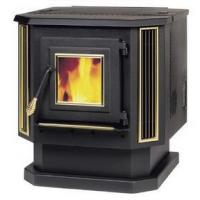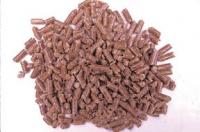
Serving the Vermont Champlain Valley Area for 45 Years
Main SectionsFront Page SportsValley VitalsIt's in the StarsStarwiseArchivesLinksAbout The VoiceContact Us |
Easy Pill To Take - More Vermonters Looking At Pellet Stoves To Cure High Heating Bill Woes
Tuesday April 1, 2008 By Ed Barna Here's a scenario, from one of the area's dealers in heating products. It's been a cold March, in this fictional world, and a family's heating oil is running low. When they call their supplier, they're told the smallest delivery is 100 gallons, and they don't have $300-some dollars, and anyway they'd rather wait and do a really big summer pre-buy. But what they do have is a pellet stove, which takes about a 40-pound bag of pellets to run for a day if it's doing all the heating. Take the truck to town, get a dozen bags for less than $100, and they'll make it through until (this is fiction, remember) spring. It's no fiction that pellet stove sales have been “on fire,” as This Old House put it. According to the Pellet Fuels Institute, about 67,000 sold in 2004; about 118,000 in 2005; about 200,000 in 2006; and this year, with most heating costs soaring, no one was predicting a decline. The pellets are compressed biomass, usually byproducts like sawdust, corn waste, fruit pits, nut hulls, and even trash. In Vermont, which is close to major forested areas including those in Canada, wood pellets predominate. Canadian companies Energex and L & G occupy a lot of shelf and floor space in Vermont, and a new pellet producer is starting a plant in New Hampshire, but as demand rises, closer sources may develop. One dealer said there was a rumor that Jacques Gill's Biomass Commodities, Inc. was close to seeking a permit for a pellet mill in Middlebury, but this could not be confirmed. Roughly a half inch in size, pellets typically come in 40 pound bags, meaning 50 bags on a pallet for a ton. Storing them indoors is almost a must, because it they get damp, the tiny particles expand and come apart--the result being a mass regression to dust. This may not matter to the people who buy wood pellets for cat litter (a bag costs about $6, and that's for 40 pounds, versus about $6 for 20 pounds of heated clay, which is harder to get rid of, one storekeeper observed), but the auger that feeds a pellet stove wants its mini-chunks. The appliances that burn them can be furnace-size, small space-heaters, or fireplace inserts, with the last sometimes helping the heating situation by stopping heat loss through an unused chimney. What they all share is a higher level of technology than most woodstoves. Instead of being fed by someone dumping pellets on the fire, the pellets go into a hopper, from which they are steadily delivered to the fire pot by an auger. There are three fans: one to help the fire burn efficiently, one to send the resulting heat to the surrounding space more efficiently, and one to move the exhaust up the chimney more efficiently. Often there are sophisticated computerized controls involved. This wizardry is not without its price, literally and figuratively. Some pellet stoves can cost as much as $3,000-though sellers say there are people with prior high heating bills who told them their unit paid for itself in a year. More things can get wrong, and to keep things going rightly, annual service is best-a tuneup like those that oil furnaces routinely get. But it can be hard to find service people; Max Pellerin of Vermont Pellet Stoves in Colchester said that business, which he and Rich Paparo run, is the only one in the area doing that job. Since they don't run without electricity, pellet stoves won't help in a power outage without some source of auxiliary power. Harman models apparently can operate for a while on a 12-volt battery, but these won't last for days-and ice-related power outages can. On the plus side, the stoves aren't as hot on the outside, which might matter to those with small children, and which will disappoint cats, who are basically little furry heat-seeking missiles whose leading religion in this climate is stove worship. The exhaust pipes, double-walled, aren't as hot, either; and being only three or four inches in diameter, can be put through walls or even window apertures rather than requiring an expensive new chimney. Required clearances are smaller: a foot from a combustible wall, not three feet like a woodstove. That and the way attractive stoves don't get dingy and the ease of situating the exhaust pipe can make a big difference to some people trying to find a place to put a new heating source. The technology is not new, though the surge of interest is. Pellerin said, “I started doing this back in the Seventies.” But there is definitely an increased demand now, he said. For those trying to make up their minds about putting in a pellet stove, there's one essential trip on the Internet (though probably the information could be obtained over the phone if necessary). The Department of Public Service, an agency in Montpelier that watches out for consumer interests, regularly calculates how much it costs for a million BTU (the British Thermal Unit has become an international standard for measuring amounts of energy). In other words, you don't have to compare cords, kilowatts, therms, gallons and tons, a process that could leave you thinking that fuels rush in where angels fear to tread. Your public servants have done all the tedious stuff, to create an apples-to-apples comparison. Again and again in recent years, wood has been cheapest, with pellets in second place. A recent report had the million BTU cost at $13.64 for wood, $19.59 for pellets, $21.38 for natural gas (available in northwestern Vermont), $29.80 for fuel oil, $33.25 for kerosene, $38.01 for electricity, and $41.30 for propane. To check the latest figures, run “Vermont Department of Public Service” in your search engine. It should come up first in the list, and on that site's first page, scroll to the bottom right to click on “DPS Monthly Fuel Price Report.” Assuming you're seriously interested in pellet stoves, where can you go to find burners and stuff to burn? In Middlebury, Aubuchon Hardware was the sole supplier we could find. Diane Smith, their a-pellet judge, said they carry Canadian Comfort's Pelpro stoves plus those made by England's Stove Works. The latter is actually a Virginia enterprise of the England family. For pellets, they have Canadian softwood pellets from Energex. Smith said they carry the premium type, manufactured to have only 1 percent ash content-which means they produce very little creosote and don't smoke up the neighborhood the way some woodstoves can. Heating with wood, Smith said, you want hardwood. “With pellets, it's just the opposite,” she said: the softwood (rammed together, remember) burns hotter and more efficiently. There are Aubuchon outlets in Vergennes and Bristol, too. Even if the stores don't have floor display models, anything in their catalog can be ordered-and Smith said they can get one in five days. Also in Bristol, Jackman's Inc. has pellets from L & G, which their pellet person, Sharon Bushey, said seem to go from hopper to auger to stove better. Stove buyers they refer either south to Rutland County or north to Chittenden County. Rutland County has the Stove Depot in Clarendon (Harman stoves), the Hearth & Cricket Stove Shop in East Wallingford (Quadrafire), Country Stoves in Rutland (Enviro Vistaflame), and the Chimney Sweep Fireplace Shop in Killington (Lopi, Avalon). Jackman's gets their pellets through the Stove and Flag Works in on Route 2A past Big Box Land in Williston. Richard Moskwa, a sales representative there, said they offer Harman and Quadrafire stoves, and only L & G pellets. Like others, he recommended using premium 1 percent ash pellets, but said they do have less-expensive, higher-ash choices as well. At Vermont Pellet Stoves in Colchester, Pellerin said they carry everything from 30,000-BTU space heaters to 400,000-BTU furnaces. Customers can choose between Jamestown, Enviro, Traeger, Whitfield, and Lennox stoves. He urged those using larger quantities of pellets to look at their price per ton, which he said could save a lot of money. Pellet stoves generally save money, Pellerin said. He keeps his 2,200-square-foot single-floor ranch house at 76 to 80 degrees for the winter on four to four and a half tons of pellets (about $800-900). Someone else he knows spends much more than that keeping 2,500 square feet at 65 degrees. Pellerin said he's been in the business long enough not only to see many people save enough to pay for their stoves, he also sees the third generation of his customers-the kids of the children of the original buyers.
|
AdvertisementsSearch our Archives |
Agricultural Weather Forecast:

© 2006-18 The Valley Voice • 656 Exchange St., Middlebury, VT 05753 • 802-388-6366 • 802-388-6368 (fax)
Valleywides: [email protected] • Classifieds: [email protected] • Info: [email protected]


 Printer Friendly
Printer Friendly